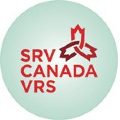Nasopharyngeal Cancer
If you are having any symptoms or have any questions, please call 811 to speak with a registered nurse 24 hours a day.
OVERVIEW
What is nasopharyngeal cancer?
Nasopharyngeal cancer is a malignant tumor that develops in the nasopharynx. The nasopharynx is the area where the back part of your nose opens into your upper throat. This is also where tubes from your ears open into your throat.
SYMPTOMS
What are some signs of nasopharyngeal cancer?
If you have nasopharyngeal cancer, you might easily mistake the symptoms for other conditions. You might first notice a lump in your neck. You might have trouble hearing in one ear, or you might have nosebleeds, headaches, blurred vision, or ringing in one or both ears. You might notice a change in the way one side of your face feels. You may have trouble breathing or speaking.
CAUSES & RISK FACTORS
What causes nasopharyngeal cancer?
No one knows for sure what causes nasopharyngeal cancer. Nasopharyngeal cancer is rare. It most often affects people who are between 30 and 50 years of age. Men are more likely to have nasopharyngeal cancer than women.
DIAGNOSIS & TESTS
How is nasopharyngeal cancer diagnosed?
Your healthcare provider might use endoscopy to try to see the cancer. For this exam, a thin tube with a very small camera on the end is put into your nose. This lets your healthcare provider get a closer look at the cancer tumor.
During endoscopy, your healthcare provider might take a small piece from the tumor. This is called a biopsy sample. The piece of tumor is then sent to a lab where it is looked at under a microscope.
Your healthcare provider might also send you to have an MRI (magnetic resonance imaging). This exam takes a special “picture” of your nasopharynx so that your healthcare provider can see the size of the tumor.
PREVENTION
Eating salt-preserved foods (like fish, eggs, leafy vegetables and roots) during early childhood may increase the risk of getting this form of cancer. The Epstein-Barr virus may also make a person more likely to get nasopharyngeal cancer. This is the same virus that causes infectious mononucleosis (also called “mono”).
If you or your ancestors come from southern China, particularly Canton (now called Guangzhou) or Hong Kong you are more likely to get this cancer. You are also more likely to get this cancer if you are from a country in Southeast Asia, like Laos, Vietnam, Cambodia or Thailand.
Tobacco use and excessive alcohol can also raise a person’s risk of developing nasopharyngeal cancer.
TREATMENT
Radiation is quite successful in treating cancer in the nasopharynx. You might also need to have chemotherapy (medicines used to treat cancer). Radiation and chemotherapy can make you feel tired and sick to your stomach. You might also have headaches for a while after radiation treatment.
Living with nasopharyngeal cancer
Many people with nasopharyngeal cancer can live normal lives. You are more likely to be cured if you find it early and the cancer has not spread to other parts of the body.
FOR MORE INFORMATION
Canadian Cancer Society:
60361

